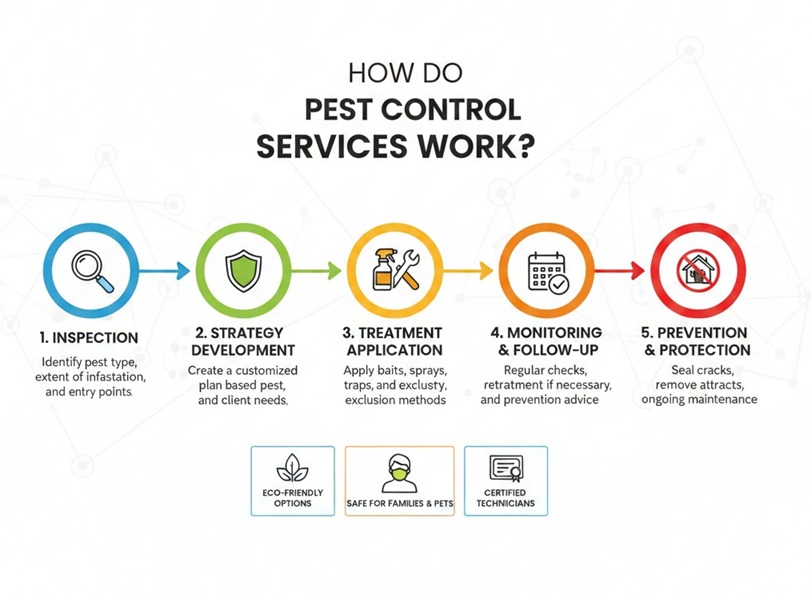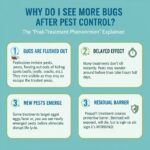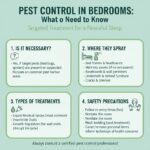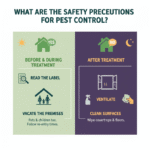How Does Pest Control Work: A Complete Guide for Homeowners and Businesses
Pest control plays a vital role in keeping homes, businesses, and entire communities safe from insects, rodents, and other nuisance creatures that can damage property and threaten health.
While most people simply call a professional when pests become visible, the actual process behind how pest control works is far more detailed, scientific, and strategic.
This guide breaks down the methods, technology, and step-by-step approach behind effective pest control, so you understand exactly what happens during treatment and how professionals keep your space protected long-term.
What Pest Control Actually Means
Pest control is the practice of identifying, managing, eliminating, and preventing pests such as rodents, ants, termites, roaches, spiders, and other harmful invaders. The goal is not only to remove existing pests but also to stop future infestations through proactive measures.
Pests fall into three major categories:
- Structural pests like termites, carpenter ants, and rodents
- Health-related pests such as mosquitoes, roaches, and flies
- Nuisance pests including silverfish, spiders, and occasional invaders
Regardless of the category, pest control works by combining inspection, targeted treatment, and long-term prevention strategies.
Why Pest Control Matters More Than You Think
Pests aren’t just annoying. They can:
- Damage property by chewing, nesting, or burrowing
- Contaminate food and surfaces
- Spread bacteria, viruses, allergens, and parasites
- Trigger asthma and allergy symptoms
- Lower indoor air quality
- Cause costly repairs when ignored
Professionals use pest control to safeguard homes, workplaces, hospitals, restaurants, and warehouses from these risks. When done regularly, it acts like a protective shield that keeps harmful invaders out.
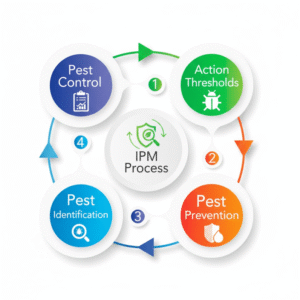
How Pest Control Works: Step-by-Step Process
Understanding the process helps you see the science and strategy behind every treatment. Here’s how a professional handles an infestation from start to finish.
1. Inspection: Finding the Root of the Problem
The first step in pest control is a detailed inspection of the property. Technicians look for:
- Entry points
- Nesting areas
- Moisture sources
- Food sources
- Damage
- Breeding zones
They also analyze the type of pest, severity of the infestation, and the conditions that allowed pests to thrive.
This step is critical because every pest species behaves differently, so treatment must be customized—not generic.
2. Identification: Determining the Exact Pest
Not all insects or rodents are treated the same way. Correct identification allows technicians to choose the safest and most effective approach.
For example:
- Ant species require different baits
- Roaches react to specific flushing agents
- Rodents need tailored trapping strategies
- Termites require soil, wood, or bait treatments
Accurate identification prevents misdiagnosis, which is a common cause of recurring problems.
3. Choosing the Right Pest Control Method
Modern pest control uses a combination of techniques rather than relying on just chemicals. Professionals follow Integrated Pest Management (IPM), a science-based approach that minimizes risk while maximizing effectiveness.
Here are the main types:
A. Chemical Pest Control
This involves using pesticides such as:
- Sprays
- Dusts
- Baits
- Growth regulators
Chemical treatments are used when infestations are established or severe. Today’s formulas are designed to be safer, targeted, and slow-acting to eliminate entire colonies, not just visible pests.
B. Physical Pest Control
Physical methods are preventive or mechanical solutions, including:
- Traps
- Glue boards
- Barriers
- Screens
- Sealing entry points
These techniques are highly effective for rodents, crawling insects, and pests entering from outdoors.
C. Biological Pest Control
Used mainly outdoors, biological methods involve introducing natural predators or microorganisms to control pest populations. This is common in agriculture and eco-sensitive areas.
D. Environmental Modification
Because pests thrive in certain conditions, technicians often recommend changes such as:
- Fixing leaks
- Reducing humidity
- Sealing cracks
- Improving sanitation
- Removing clutter
These adjustments help prevent infestations before they start.
4. Treatment: Eliminating the Pests Safely
Once a plan is created, technicians perform targeted treatments to remove pests. This may include:
- Applying sprays to cracks and crevices
- Setting traps in strategic areas
- Using baits for ants, roaches, and rodents
- Treating soil or wood for termites
- Using dust in wall voids
Professionals ensure treatments are safe for families, pets, and sensitive environments like kitchens or hospitals.
5. Prevention: Keeping Pests from Coming Back
The last step in pest control is long-term prevention. Professionals focus on:
- Monitoring pest activity
- Installing exterior barriers
- Applying routine perimeter treatments
- Reinforcing entry-point sealing
- Providing maintenance plans
Consistent prevention is what keeps homes and businesses pest-free year-round.
Methods Used in Modern Pest Control
To give you a clear picture, here’s a simplified overview of today’s most effective tools:
✔ Baits and Gels
Used for ants, roaches, and rodents. They work silently and eliminate entire colonies.
✔ Growth Regulators (IGRs)
These stop pests from maturing or reproducing.
✔ Non-toxic Treatments
Such as vacuuming, steaming, and heat—great for bed bugs.
✔ Trapping Systems
Rodent traps, termite bait stations, and fly light traps.
✔ Barrier Treatments
Exterior applications that keep pests outside where they belong.
How Long Does Pest Control Take to Work?
Results depend on the type of pest:
- Ants: 2–7 days
- Roaches: 1–2 weeks
- Rodents: 24–72 hours
- Termites: Several weeks
- Bed bugs: Multiple treatments
Most pests don’t disappear instantly because modern treatments are designed to eliminate the source, not just the visible pests.
Why Professional Pest Control Works Better Than DIY
While DIY pest control may kill a few pests temporarily, they don’t:
- Remove nests
- Eliminate eggs
- Treat wall voids
- Address outdoor sources
- Solve moisture issues
- Block entry points
Professional pest control combines advanced products, training, and long-term prevention—things store-bought solutions can’t offer.
When You Should Call a Pest Control Company
Contact a professional if you notice:
- Droppings
- Chewed wires or food packages
- Unusual smells
- Live or dead pests
- Noises in walls or ceilings
- Grease marks or tracks
- Sudden ant or roach activity
Early action prevents major damage and reduces treatment costs.
Final Thoughts: Pest Control Is a Long-Term Investment
Effective pest control is not a one-time task—it’s an ongoing strategy that protects your home, health, and peace of mind. By combining inspection, targeted treatment, and continuous prevention, professionals can eliminate infestations and stop them from returning.
If you suspect pest activity, don’t wait. Call the local pest control company earlier to address the issue; the easier it is to fix and the less damage pests can cause.
FAQs About Pest Control Process
What does pest control do on a first visit?
On a first visit, a pest control professional will conduct a thorough inspection of your property’s interior and exterior to identify pest issues, entry points, and contributing environmental factors. They will then create a customized treatment plan based on their findings and discuss it with you, which may include applying initial treatments during the same visit.
Do exterminators go in every room?
Exterminators don’t necessarily go into every room; they focus on specific areas where pests are likely to be found, such as kitchens, bathrooms, basements, and entry points, and will treat based on a targeted plan. They will also treat areas like closets or under beds if they are identified as high-risk areas or part of the treatment plan. The technician’s time frame and the specific pest problem influence how much of the home is treated.
What is the procedure of pest control?
The pest control process typically involves a consultation, inspection, pest identification, treatment, and prevention. A professional first assesses the problem by inspecting the property and identifying the specific pest, then develops a targeted treatment plan that may include physical methods or pesticides. Finally, they provide recommendations for ongoing prevention to help prevent future infestations.
How do I prepare my house for pest control?
To prepare for pest control, declutter and clean your home, especially kitchens and bathrooms. Pull large furniture away from walls, store all food and dishes in sealed containers, and remove personal items like toys and pet dishes. Secure pets in a safe location outside the home and cover or secure aquariums.
What is the hardest pest to control?
The hardest pests to get rid of are often bed bugs, cockroaches, and termites due to their ability to hide in small spaces, reproduce quickly, and develop resistance to common treatments. Other challenging pests include rodents and certain species of ants and fleas.

